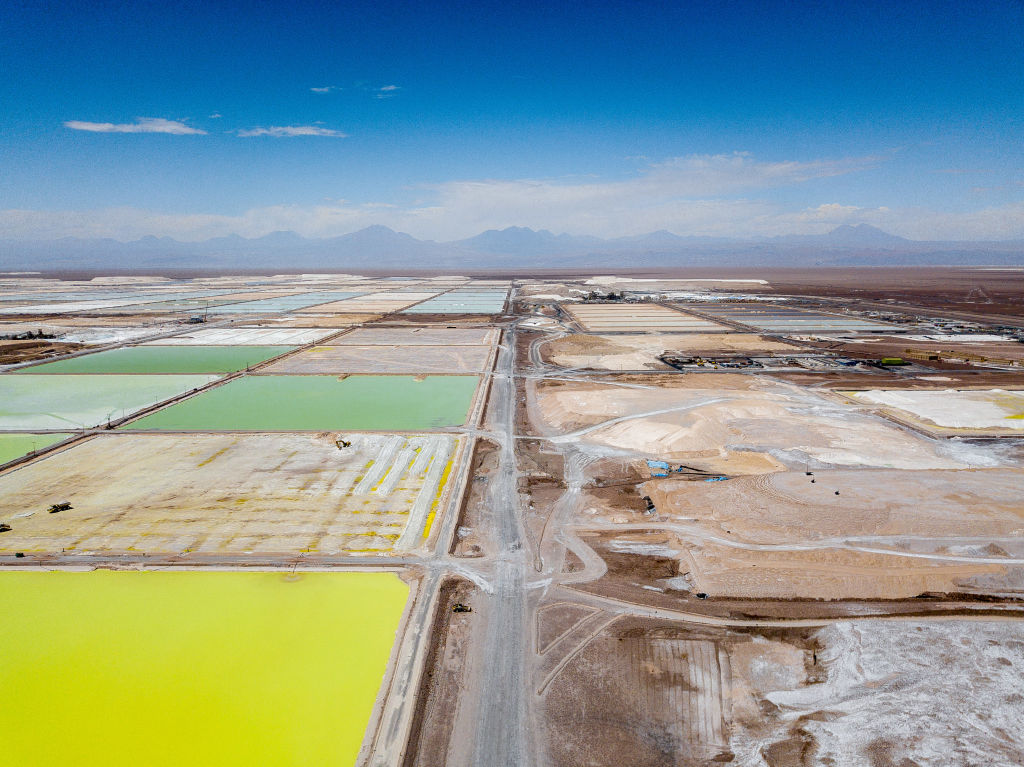Paraguay: Development and Growth Opportunities
Paraguay: Development and Growth Opportunities
Paraguay's geographic location, stable economy, and natural resources offer investment opportunities to spur development, as public and private sector leaders noted during AS/COA's first Latin American Cities Conference in Asunción.
Speakers:
- Federico Franco, Vice President, Republic of Paraguay
- Francisco José Rivas, Minister, Ministry of Industry and Commerce
- Enzo Cardozo Jiménez, Minister, Ministry of Agriculture and Livestock
- Jorge Corvalán, President, Central Bank of Paraguay
- Germán Ríos, Director of Public Policy and Competitiveness, Corporación Andina de Fomento (CAF)
- Susan Segal, President y CEO, Americas Society and Council of the Americas
Panel: “Development Perspectives and growth opportunities in Paraguay”
- Claudio Yamaguti, CEO, InterBanco
- Pablo Montivero Araya, General Manager of Food, Southern Cone, PepsiCo International
- Pablo Vaquero, Director of Corporate Affairs, Monsanto Latinoamérica Sur
- Miguel Espírito Santo, President-Director, Espírito Santo Group
- Carlos Jorge Biedermann, President, Cámara de Anunciantes del Paraguay
Summary
On Friday August 28, public and private sector leaders gathered at AS/COA’s first conference in Asunción to discuss investment and growth opportunities in Paraguay. More than 200 guests heard remarks by the minister of Industry and Commerce, the minister of Agriculture, the president of the Central Bank, and business representatives, who shared their views on the countries development prospects. Organized in conjunction with Ministry of Industry and Commerce and the Ministry of Foreign Relations, the conference explored Paraguay’s economic outlook.
Agriculture and Development
Minister of Agriculture Enzo Cardozo Jimenez stressed the importance of agriculture to Paraguay’s economy. He pointed out that poverty rates in rural areas, where 42 percent of the population lives, run much higher than in cities. With 35 percent of people living in poverty and 24 percent of those in extreme poverty, agriculture needs to become a more dynamic sector with the potential to expand job offerings. Cardozo Jimenez said his ministry focuses efforts on providing technical and financial assistance to small farmers, offering training of new technologies as a means to generate employment. Agriculture represented 28 percent of the country’s GNP in 2008 and the minister expected this percentage to continue rising in upcoming years.
Panel: “Development Perspectives and Growth Opportunities in Paraguay”
During the conference’s panel, foreign and domestic firms reviewed Paraguayan growth prospects. Speakers agreed that the Paraguay’s stable economy, geographic location, and natural resources offered several investment opportunities. However, the business representatives mentioned the need to accelerate social mobility and improve the country’s infrastructure.
Carlos J. Biedermann, president of local business group Cámara Paraguaya de Anunciantes said, “Paraguay is a good place to do business.” He mentioned the country’s water reserves, extensive arable land, low energy costs, and the country’s location at “the center of the highest income region of the continent” as some of Paraguay’s business advantages. Monsanto’s Pablo Vaquero agreed with Biedermann and said that the country’s extensive water reserves and arable land increased the potential for agricultural investments. Vaquero warned that, by 2025, emerging economies could account for a deficit of 300 tons of grain due to lack of water, given that the agricultural sector currently uses 75 percent of the world’s potable water. Moreover, Monsanto’s advances in the biotechnology field could help double Paraguay’s agricultural production by 2030, he said.
Panelists also reviewed options for and obstacles to growth and development in Paraguay. The country registered 5 percent GDP growth in 2008, but InterBanco’s CEO, Claudio Yamaguti said Paraguay needs between 6 and 7 percent growth to meet its economic potential. “The government needs to fight bureaucracy and foster social inclusion” to achieve the requisite higher growth rate, said the banker. Germán Ríos, director of Public Policy and Competitiveness at the Corporación Andina de Fomento highlighted Paraguay’s “macroeconomic stability and the ideal conditions for investment and business.” Nonetheless, he mentioned the country needs to advance in the areas of social integration and improve its development infrastructure. Rios said CAF had sought to address this issue through an $85 million loan delivered by its Program of Social Investment and Infrastructure as part of efforts to “become a partner in the country’s development path.”
The Economic Situation
Jorge Corvalán, president of the Central Bank, echoed remarks about Paraguay’s macroeconomic stability and said the country had been relatively well prepared to face the financial crisis. He estimated Paraguay would experience a negative growth rate of 3.8 percent in 2009 but forecast a rebound into positive territory in 2010 by as much as 3.5 percent. Corvalán noted positive economic factors, including a low public debt to GDP ratio of 40 percent, a small public sector administration, increased consolidation of the banking sector, and a fiscal surplus that reached 2.8 percent of GDP in 2008. Moreover, Paraguay saw a sharp rise in 2008 foreign investment, totaling $2.15 billion—the largest sum recorded since 1996.







